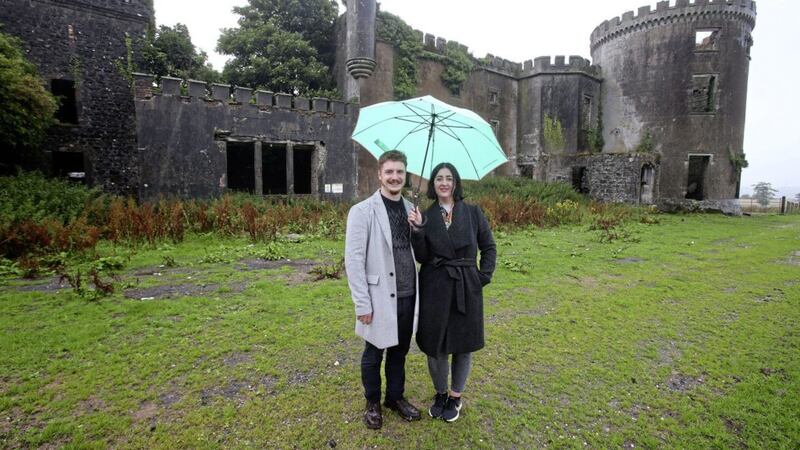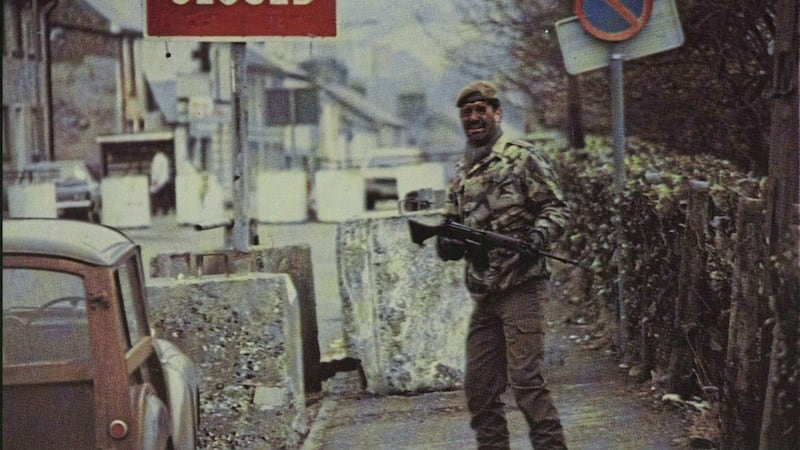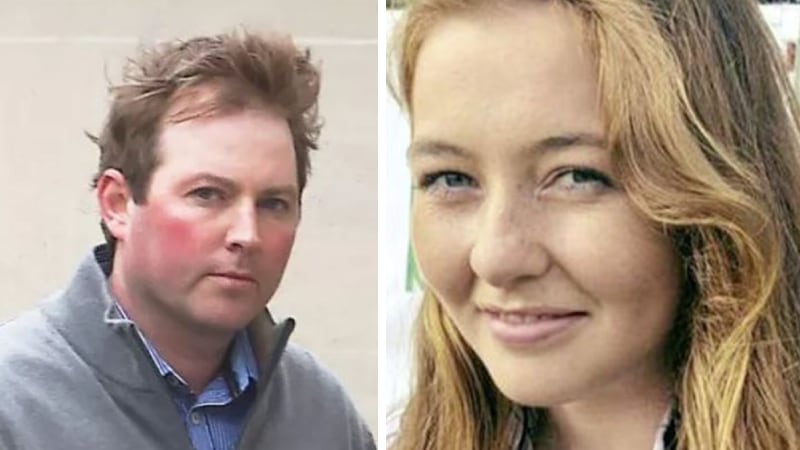Kilwaughter Castle has fascinated Ryan Greer since he was a child.
Mr Greer, from Ballyclare, remembers travelling past the site with his parents en route to Larne.
“We drove past it all the time,” he said.
“Years later, when I was driving myself, I pulled up to it and had a look. Then I started to research it myself…For the last four or five years it’s been a bit of an obsession.”
A musician, Mr Greer teaches at the International College of Musical Theatre in south Belfast. He also plays in popular Abba tribute band, the Björn Identity, and helps run EastSide Community Choir in east Belfast along with his partner Helenna Howie.
He and Ms Howie (28), the production manager for the Ulster Orchestra, aim to take over part-ownership of the castle from the current owner Anne Ferguson, who lives in Queensland in Australia.
Ms Ferguson’s father bought the castle in the 1980s.
Now Mr Greer will be the first person from Co Antrim to own the building for well over a century.
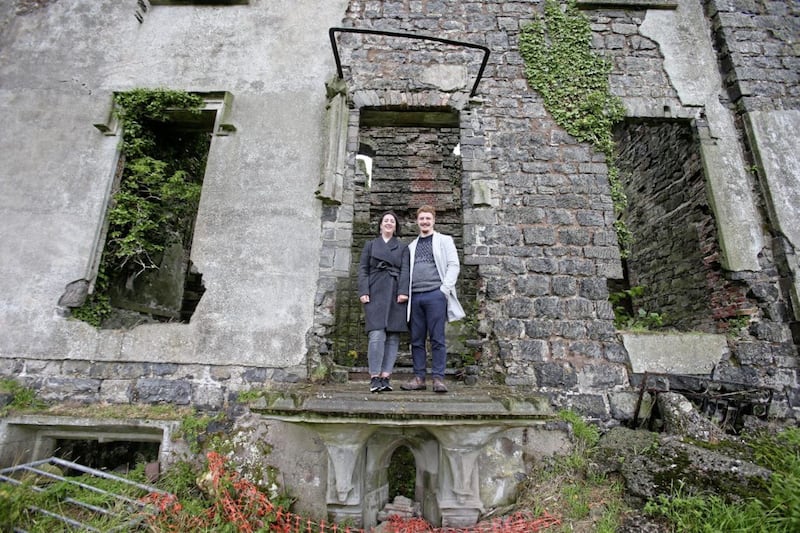
The 27-year-old began volunteering at the castle several years ago and was later employed as a property manager.
“I’m not sure what mad part of my brain thought I would do this,” he joked.
“My partner and I care a lot about history in general but particularly this place.
“Unfortunately Northern Ireland’s got a really poor history of ripping down everything that’s important and slapping a car park over it.”
Kilwaughter has an ancient history. The site was mentioned in papal taxation as far back as 1306.
And the area was once home to the O Gnímh clan of bards who switched allegiance from the O’Neills of Ulster to their rivals the MacDonnells.
“There’s a whole layer of ancient Irish history to uncover before you even get to the Scottish plantations,” Mr Greer said.
The O Gnímh name was later Anglicised to Agnew.
“The earliest iteration of the castle was 1622,” Mr Greer said.
“That’s the old plantation house.
“They had reasonably successful marriages and business dealings and married into merchant families. I think at one point one branch of the family owned White’s Tavern in Belfast, that was their warehouse.”
A major early 19th century extension to the castle, commissioned by Edward Jones Agnew, was designed by John Nash - the architect of Buckingham Palace in London.
The castle once had an estate of around 10,000 acres - one of the largest in Ireland.
It was inherited in the late 19th century by Mary Maria Augusta Simon who was married to an Italian count.
The estate was mainly broken up in the early 20th century.
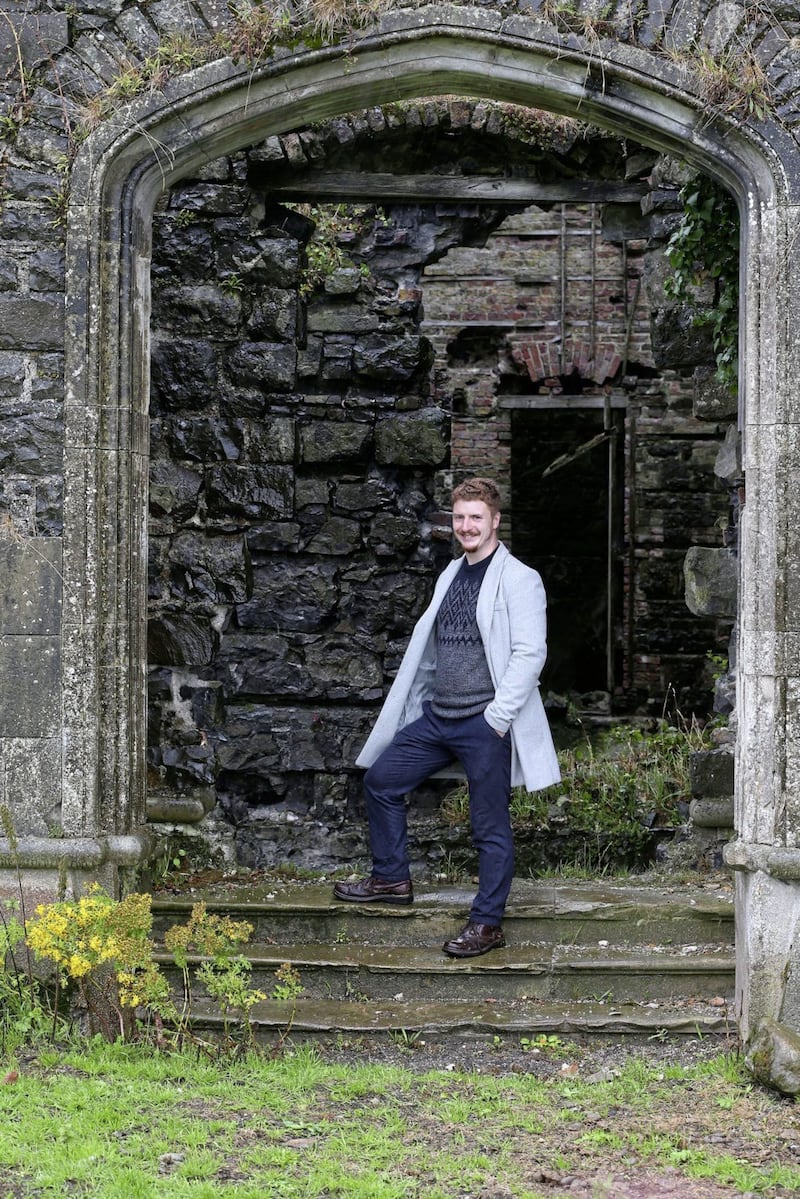
During the Second World War, the castle was requisitioned by the British government due to the family’s links with Italy, part of the Axis powers.
Belgian and American troops were stationed at the castle, including the 644th US battalion of tank destroyers who were part of the Allied push towards Germany following D-Day in 1944.
“They trained on the grounds and actually knocked down part of the entrance gate to get their tanks in,” Mr Greer said.
“We still have the shower block on the grounds that they would have used.”
He added: “A gentleman who manages the fishing for us… said his granny used to do all their laundry for them”.
The castle was not returned to the family until 1951. However, the British government had earlier sold demolition rights to scrap metal dealers who stripped lead from the roof, the floor timbers and panelling.
Mr Greer said he aims to preserve the remaining structure, now rumoured to be haunted by a ‘white lady’ who is supposed to appear at times of crisis.
“Parts of it have deteriorated over time… but we still have 95-90% of the stone shell,” he said.
“We can see where the fireplaces were, where the floors were, where the doors were.”
Mr Greer’s first steps will be to secure the boundaries of the castle and clear rubbish which has been dumped in the building over the years.
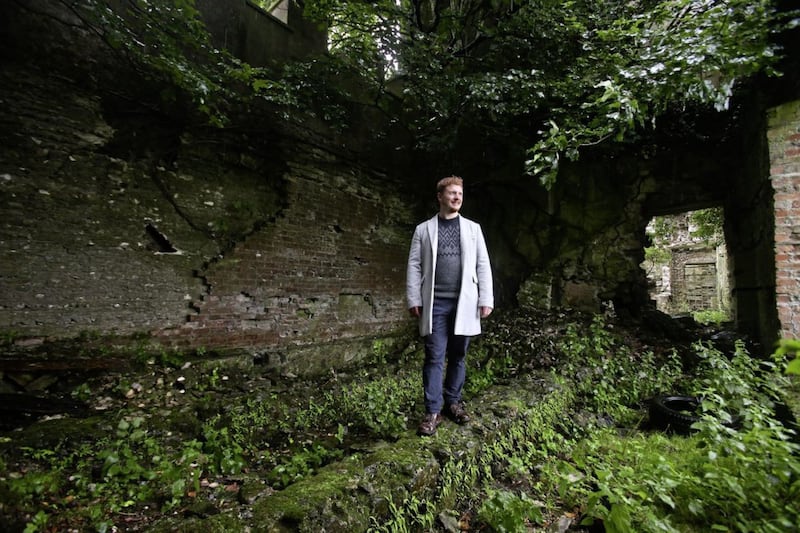
He and Ms Howie have moved to Larne to be closer to the site.
They have ambitious plans and aim to host tours from next year.
“We’d like to put in a small car park,” he said.
“Over time we’d like to do bigger events, do photoshoots, small scale classic car displays.”
He added: “The starting point for us was an open day in 2019 for European Heritage Weekend.”
“We did one day and we had nearly 600 people."
As part of the open day, Mr Greer put on an exhibit in the village hall based on Victorian-era pictures taken by a wealthy American woman and her brother who had rented the property.
“Her and her brother were pioneer photographers so there are hundreds, if not thousands, of really high quality Victorian pictures of the castle in its heyday - ones of parties but also the servants, the housekeeper holding a handful of puppies, people tending to the horses, children playing,” he said.
“There were people who came along to the exhibit who recognised their ancestors because their families are still in the area.”
Mr Greer said the open day gave the couple hope that there was wider interest in the castle.
“Some people have looked at it and said ‘oh it’s sad it’s too far gone’ but for me that’s not really the way to look at it,” he said.
“It’s there as it is now. There’s no point in moaning how nice it used to look.
“We’ve got to make it work for the local community and for tourists now because it’s an important landmark.”
Mr Greer said he understood that some people view Irish castles and country houses as reminders of colonial oppression.
But he said they were also built by “expert stonemasons and artists, real craftspeople who put their blood, sweat and tears into work they could be proud of”.
“These buildings to me, yes the families who built them were very important… but they’re also about the history of people who built them and those who helped to support them - all the tenants,” he said.
“When you lose the building in some ways you lose the story, you lose the history.”
He added: “So much of Larne in particular has been flattened. To have a building that... is one of the integral parts of the history of Antrim and the whole island, that was rebuilt by the architect who built Buckingham Palace, Regent Street and Brighton Pavilion, it’s too important.”
